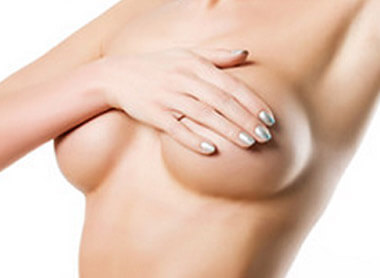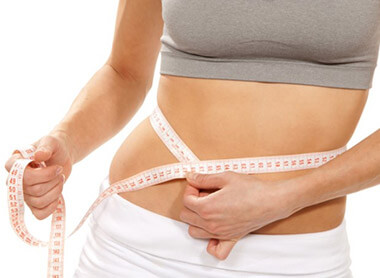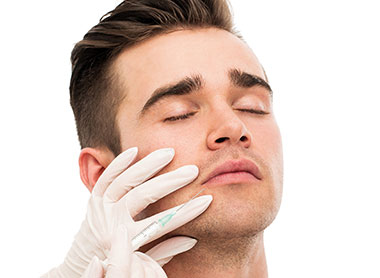Lip augmentation is very individualised matter. The duration and effect of lip enhancement depends on the surgery method chosen. Different procedures satisfy different individual’s needs. Thus it is important to discuss your ideas & expectations as clear as possible at the initial consultation. Provided the most suitable treatment for you is chosen, then the chances are excellent that you will be happy with the appearance of your new lips. That is why you should choose a plastic surgeon who is experienced in all or at least most of the methods described above. If not, a conventional procedure may result in your dissatisfaction.
- Face - introduction
- Eyelid Surgery
- Ear Reshaping Surgery - Otoplasty
- Face and Neck Lift
- Nose reshaping surgery
- Lip Augmentation
- Gallery
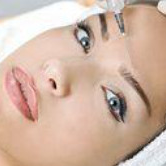
Lip Augmentation
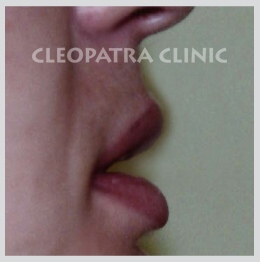
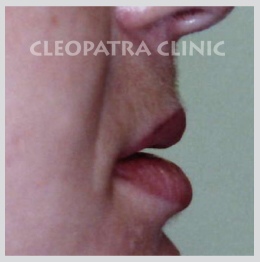
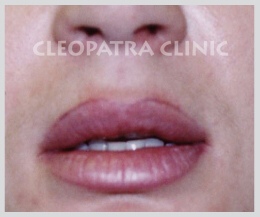
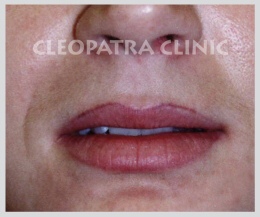
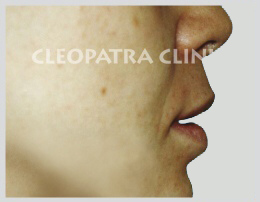
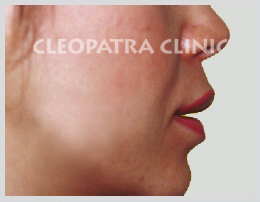
Gallery
Operational magnification - moves the mucosa with a permanent effect
before the procedure
after the procedure

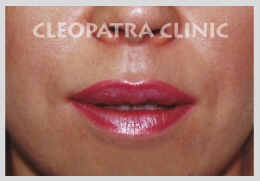
the operative enlargement of the upper lip by the extraction of the mucosa
before the procedure
after the procedure


Operational magnification - moves the mucosa with a permanent effect
before the procedure
after the procedure
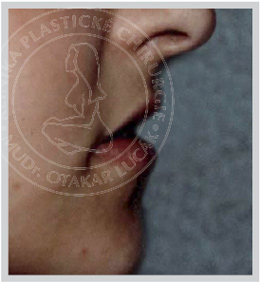
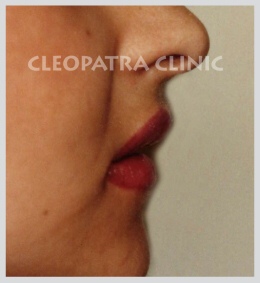
Operational magnification - moves the mucosa with a permanent effect
before the procedure
after the procedure


before the procedure
after the procedure


Introduction
Full red lips are one of the attributes of youth & beauty in a woman. Conversely, narrowing & thinning of the lips, later on worsened with additional vertical wrinkles, are features of the ageing face. The sensuality of a full pair of lips was definitely publicised by sex symbols such as Marilyn Monroe & Brigitte Bardot (Paris lip). In the modern era, which celebrity more than Angelina Jolie typifies this fulsome, defined-mouth ‘ideal’?
Formerly the only ways to enhance the appearance of lips was artful use of lipstick, or tattooing for achieving permanent colour. These methods are however no longer sufficient. Nowadays women are not satisfied with simply improving the colour, but more and more desire to have physically-fuller lips or enhance the thin redness of their lips. Therefore, new procedures & methods (both surgical & non-surgical) have been introduced, allowing us to achieve such results. And so we are at the beginning of a widening spectrum – new methods enable us to reach, more often, better & more-permanent results. And, good results bring more & more women to lip-enhancement surgery. The more procedures, and satisfied women, the greater reason & effort made by pharmaceutical companies to produce new, better & more-permanent lip-filling materials. The conical spectrum used to be narrow & short, but now new technologies are giving a vaster dimension of choice, for your benefit, in this surgical spectrum. Surely you have noticed one thing – unlike other procedures I am addressing a feminine audience! That’s you – the ladies! Despite increasing number of men desiring cosmetic surgery procedures, we have not recorded a single man yet who would request a lip augmentation procedure. This is just another fact that full lips are purely a feminine feature.
Am I a suitable candidate for lip augmentation?
This will be decided at your personal consultation with Dr. Zakout, or his colleagues. During this time, we will discuss your ideas, wishes & expectations of what your lip or lips should look like. Your lips will be examined & evaluated in relation to other parameters of your face. Only after this discussion will you be offered exactly such a treatment-option that’ll meet your goals, as well as anatomy & lifestyle. As with any other cosmetic surgery procedure, you will be asked about your medical history. It is necessary to find out and exclude any conditions that could cause problems (e.g. active cold sores, active or dormant skin infections, scars after injury, previous lip surgery, diabetes, non-healed sores from injuries, deep fissures of the lips etc.)
Furthermore it is very important to exclude intolerance to lip substances used for lip augmentation. Most injections, including collagen ones, must not be used in pregnant women. This treatment is also unsuitable for patients who are allergic to beef products, who suffer from autoimmune diseases, and those who are allergic to local anaesthetics. The minimum age for lip enhancement surgery is the period when a person stops growing physically, that is roughly the end of adolescence. The upper age limit is determined by the overall state of health. Women over the age of fifty, or even sixty, are our frequent customers as well because, as people age, their lips lose fullness/volume. The advantage is that this surgery can be accompanied by the correction of upper lip wrinkles.
What are the options for lip augmentation?
There are three kinds of lip augmentation procedures:
- Injection
- Surgical enlargement – using foreign material (Alloderm, Softform, Gore-Tex, Golden Threads etc.)
- Surgical enlargement – using the patient’s own tissue (tissue advancement, a “strip” of own skin or scar)
1. Injection technique for lip augmentation
Injections are definitely the easiest procedure. It can be roughly divided into two groups: with temporary effect…and long-lasting (‘more-permanent’) effect. Temporary effects are produced by, for example: Collagen, Hylaform, Restylane, Dermalive, Artecoll. On the other hand, Bio-Alcamid is one of those assuring a more-permanent effect. Irrespective of this division, there are products within each group which vary according to the absolute time-length of the effect (e.g. a temporary effect from 3 months up to 1-2 years) as well as the range of likelihood of allergy occurrence, granulomas, and the need for skin pre-testing.
- Collagen
Collagen is easily injected with a thin needle just under the lip’s surface, without the need of a local anaesthetic. Nevertheless performing the surgery under local anaesthesia lessens the patient’s inconvenience. Collagen is most commonly applied into the border of the lips, thus giving better definition to the lip line. The results are immediate, and the patient can in fact perform her social functions that night and except for minor swelling she will look great. If a greater amount of collagen is injected, initial swelling lasts 1-2 days. Collagen injections are not however permanent. Since the Collagen composition is similar to your own skin, it gradually undergoes a gentle, uniform disintegration…and is naturally absorbed by the body after 3-5 months. This period however varies among individuals. In order to regain the appearance, the Collagen injections must be repeated or refilled after this period. The disadvantage is that there are some people who are allergic to Collagen itself. Therefore it is an essential prerequisite to carry out a tolerance test and wait 28 days prior to the treatment itself.
Effect: Temporary
- Hylaform
Hylaform is a viscoelastic gel, and is made from a natural material (hyalunoran) that provides the skin with support & volume (elastic cushioning). Injection is similar to Collagen but no skin test is required, and thus can be performed immediately. The durability is similar to Collagen – about 6 months on average.
Effect: Temporary – 6 months on average.
- Restylane
This is a non-animal stabilised hyaluronic acid. It consists of complex sugar chains that have been stabilised for longer lasting effect on the skin. The production of Restylane is similar to the manufacturing process of insulin or antibiotics. In combination with the body’s own hyaluronic acid, it creates (increases) volume for the treatment of lips…and other lines or wrinkles as well. There is no need for pre-testing, and the injection is done in the same way as Collagen. It is said to have a longer lasting effect than Collagen or Hylaform.
Effect: Temporary – 6 months on average
- Artecoll
Artecoll is a solution containing polymethylmethacrylate microspheres. This solution is injected underneath the skin. The microspheres are encapsulated (enclosed) by the body’s collagen fibres, thereby lifting & strengthening the skin. Thanks to this, the durability is longer than the effect of injection materials mentioned above. No pre-testing is necessary, but in more pain-sensitive patients it may require a local anaesthetic.
Effect: Temporary but very long lasting.
- Bio - alcamid
Bio-Alcamid is ‘alcamid water’ solution. This is designed for application just beneath the skin or under the lip’s surface, but not inside. That is why it cannot be used for filling-in sharp wrinkles as opposed to Restylane & Collagen. However, for lip & deep crease filling, it is ideal for both its uncomplicated injection implantation (suitable consistency), and so far unreported allergic reactions or any lump-formation after application (granulomas). After being injected into the region between the lip’s surface & muscle or beneath the skin, the alcamid solution is not absorbed by the body, but is wrapped by a membrane, creating a soft permanent ‘blister’ effect. The effect of the injection of Bio-Alcamid is therefore permanent! Another advantage of Bio-Alcamid in contrast to other permanent substances is that it is possible, in the case of unwanted unevenness of lip redness after application, to remove a part of Bio-Alcamid. During the application it is desirable to numb the lip with local anaesthesia.
Effect: Permanent
- Patient’s own body fat
Fat injection/transfer is associated with various degrees of durability. However, generally it is considered to be rather unpredictable and therefore should be classified as substance with a temporary effect. Fat is obtained from different body parts. Most commonly from the abdomen, hips or outer thighs, by micro-liposuction using a syringe. At first the area the fat will be taken from is numbed, and then fat is sucked using a cannula, washed & filtered. The filtered fat is then injected into the area between the surface of the lip and the muscle so as to create a fuller lip.
Although theoretically live fat cells should “take” well in the area of application, there are several factors that interfere with this premise. An important factor is movement. The less movement in the injected area, the longer fat cells survive. Thus, in very mobile/muscle-dynamic areas like the mouth & surrounding tissues, the ‘take’ is about 15-20%. Therefore it is necessary to expect multiple fat injections with intervals in order to achieve a good result. A recommended injection interval for the fat transfer, is 8 weeks. This must be taken into account already during the fat-removal from donor site – more fat must be sucked out, and the excess is stored in syringes under sterile conditions in a fridge. Since the patient’s own fat is used, there is no overall risk of an allergic reaction. After the injection, there is temporarily a greater-swelling, soreness & bruising to be expected. Patients can usually return to normal activities the day of surgery, though strenuous activities & important social duties should be avoided for a week.
Effect: Individual Individual – in some patients temporary (6-12 months), in others permanent to varying degrees.
2. Surgical lip enlargement – using foreign material
In contrast to the previous alternatives the advantage of surgically inserted implants is that they have permanent or very long-lasting effect.
- Alloderm:
This is one of the rather newer types of implants. Alloderm is a material made from human skin. It is obtained from tissue banks, where skin from dead donors is removed under strict sterile conditions. The skin gained in this way is placed into an antibiotic solution, and then sent for processing. This involves removing the epidermis (the outer layer of skin cells) and all the cells in the dermis (skin layer/corium). The remaining material is a collagen framework, which provides the skin with firmness. What is important is that no constituents are left that would cause the rejection or inflammation as happens, with unprocessed tissue transplants. Therefore the Alloderm graft, when transplanted to a patient, becomes a natural part of the patient’s own tissue, and afterwards behaves like normal healthy tissue.
Are Alloderm grafts safe? An appropriate question when considering current occurrence of AIDS, jaundice of all types etc. Before any processing of the skin occurs, the donor undergoes a complete examination by the tissue bank. The donor’s medical & social history, and cause of death is carefully examined & documented. The tissue banks or certified laboratories use verified (licensed) tests for an extensive testing of blood samples. The donor must be found negative for Hepatitis B and C, HIV types 1 and 2 antibodies (screening for AIDS), and syphilis. What is more, it is important to realise that human pathogenic viruses, including HIV, need certain types of human cells so that they can live & grow themselves. These viruses are in fact “parasites” of cells, and cannot survive without them. The processing of Alloderm removes all these cells, thus eliminating components necessary for the survival & transfer of these viruses. In addition, after cells have been removed, the Alloderm grafts are deep-frozen. As an additional safety measure, Alloderm grafts undergo microscopic & other analytical tests, both before & after the process, in order to exclude pathogenic contamination, and reach uniform quality.
How long has Alloderm been used? The use of Alloderm started in 1992 for treating burns-victim patients, and in 1994 directly for plastic surgery. A few years ago, more than 50,000 patients with Alloderm grafts were recorded.
What are the advantages of Alloderm? Alloderm is the only available product able to regenerate normal soft tissue. As it is human tissue, it does not provoke any inflammatory or allergic reactions, and the pre-testing necessary with animal collagen is not required. This graft does not feel hard either, which is quite common with many synthetic materials. When Alloderm is used as an implant, naturally it is not necessary any more to remove fat or skin from the donor’s body to transplant into another area, preventing further scars.
What are the disadvantages of Alloderm? In spite of the thorough Alloderm process, some people may still have a psychological problem with having “someone else’s skin” inserted under their own. Although Alloderm seems long-lasting – studies & clinical experience confirm up to 2-year life span – a longer period of time is necessary to reveal whether Alloderm is permanent or not. There is a small portion of patients who have been reported to absorb the entirety of the volume of Alloderm within 6 months after surgery. However, if Alloderm lip augmentation does not become smaller within 7-8 weeks after application, it is irreversible. This comes down to the integration of Alloderm to the patient’s own tissue, thereby making it difficult or even impossible to try to remove the Alloderm after this period of time.
The procedure: surgery is usually carried out on an outpatient basis under local anaesthetic & sedation. The frozen Alloderm graft thin-‘sheet’ is hydrated in a sterile solution, getting very soft & pliable and feels like your own tissue. To use a broad analogy, it’s like when you receive a blood transfusion from a blood bank…and that blood (from donors whom you’ve never met) ‘takes’ to the blood in your own veins & heart, with no problems. The Alloderm graft is then rolled into a tube of such a thickness corresponding to how much fuller the lips should be. After that, incisions inside both corners of the mouth are made. Under the skin of the lips a tunnel is created where the Alloderm is poked-on-through. The incisions are then sutured with simple sutures. An antibiotic ointment is applied on it for a few days until the incisions are healed. You will also be prescribed a short dose of antibiotics so as to minimise the risk of infection.
After surgery: you should expect to have a “bee stung” look because of bigger swelling. Also some bruising may occur. In order to minimise these, it is advisable to apply cold compresses in the first days. Although most of the swelling & bruising will have subsided after a few days, the healing process will still go on. This can take up to 2 months. During this period, the graft will be slightly firm to the touch. This period may even be longer in the event that, despite all precautions taken, the patients develops a postoperative infection, reaction to the material or if there was any other material previously injected or implanted into this area. As the graft heals & becomes a part of your own tissue, it gets softer, and within a few months you should not be able to distinguish it from the surrounding skin. It is important to remember that Alloderm integrates into your own natural tissue. This process will considerably advance after about two months. Therefore if you wanted to have your implant removed for whatever reason, it would have to be done by 5-6 weeks following surgery since complications are likely to develop at later phases.
What are the risks? As with any surgery, the risk of bleeding & infection is present. People who are prone to cold sores may experience temporary aggravation of same. That is why patients with this anamnesis are advised to preventively treat their lips with anti-herpes ointment for several days prior to any lip surgery procedure. Nevertheless, should a cold sore occur, you would be prescribed tablets & other ointments to treat cold sores. Other potential problems include slight asymmetries of the lips, scarring, firmness of the graft (transplant) and, rarely, changes in sensation.
Other options: SoftForm implants, Gore-Tex, Golden Threads etc.
3. Surgical lip enlargement – using the body’s own tissue
- Mucosal V-Y Advancement
This is probably the first developed surgical type of lip augmentation. This procedure is commonly used for reconstruction, after such accidents that leave parts of the mouth of lips scarred or destroyed. During this procedure, a flap of your own lip tissue from inside your mouth is shifted forwards in order to give your lips a fuller look & mainly to extend the lips. Therefore this technique is the most suitable for patients with too-exposed teeth. It does not make too much difference in the increase in volume, though. This procedure is surgically arduous, and for the lips highly traumatic (as opposed to insertions of implants), and thus starts to be unpopular with most plastic surgeons. Moreover, with greater outward-advancement, the tissue on the border of the lip may start dry up, which is sometimes noticeable. The V-Y shaped scars are in the inner side of the lips from the teeth, so these are not visible. The amount of enlargement is limited by the amount of usable tissue.
Filling the lips with own tissue It is exactly the same technique that has already been described in detail in the Alloderm section with one difference: it is your own tissue that is threaded through the lip. Mostly it is one’s own scar (if the patient has one) or the deepest layer of skin (corium). Epidermis – the top layer – is removed from the scar or skin prior to the application, so that once it has been poked-on-through it incorporates smoothly. Practice has shown that these auto-implants are easily integrated into the lips, they are virtually impalpable and do not cause any problems. The disadvantage is the need for a scar to be taken, and limited capability of correcting very subtle details. It is also not the best solution when it comes to a considerable lip enhancement. But generally we can say that this method permanently belongs to the range of lip augmentation techniques.
Effect: permanent
If I have flown, or travelled overland, to Ostrava to have this treatment, how soon can I travel back to my home country, and what does it mean for follow up visits?
For this procedure, you will be required to arrive at Cleopatra Clinic in Ostrava, at least ……(hours/days), before your operation, so that you can be prepared in the clinic. You (will/will not be) be required to stay over-night, on the night before your surgery, at the clinic. Immediately after your surgery, you will stay recuperating at Cleopatra Clinic for …....(hours/days). After completing this short Clinic-stay period, you must stay in your (hotel/apartment above Clinic) in Ostrava area for at least…..(hours/days), to comply with post-op check-up & bandage changes. After this period, you are fit to fly or travel overland, back to your home country. Your Cleopatra Clinic surgeon will advise you, at consultation, or during your initial phone call/email to us, about the possibilities of you arranging with a doctor in your home-country to perform final bandage-change/stitches-removal, where relevant. (Also, please do pay attention to your Cleopatra Clinic surgeon’s advice regarding necessary medical preparation documents you’ll need, before you travel to Ostrava, such as EEG, blood-tests, and chest x-ray, where applicable, for this type of operation.)
Can I travel to Ostrava as part of a holiday, and incorporate my first consultation at Cleopatra Clinic, into that holiday?
Of course you can! We have had several satisfied clients already, who dropped by our clinic to register their interest & intent to have an elective operation with us, and who’d actually been on vacation in the West Poland/East Czech Republic area. They had heard that Czechoslovakia is actually the birthplace of many historical advances in plastic surgery; and whose surgeons continue to teach and make advances in this area of medicine, finding new techniques which are then adopted & emulated by other surgeons all over the world.
There are many people who come to this part of the world to enjoy Poland’s Zakopane, Katowice, & Krakow, and Prague in Czech Rep., who made the trip to us, to make enquiries! Ostrava itself is a great little city, with a proud tradition of hardworking people, nestled in the west Silesia region. Many German, British, Danish and other European nationalities enjoy visiting this area, and find it a pleasure to travel on the Ostrava trams! With airlines such as Germanwings, Wizzair, Ryanair, easyJet and others, it is possible and more than convenient to travel here to enjoy the scenery, the delicious local cuisine…and 500mls mug of delicious local Ostravar beer! Ostrava itself is undergoing a regeneration, and there are several top class new shopping malls you can visit, if so inclined. Also, go onto ‘trivago.com’, and get really great deals on hotels in every price range!
Summary
Our services
Write us
We will call you in the shortest possible time (within 1 hour).


